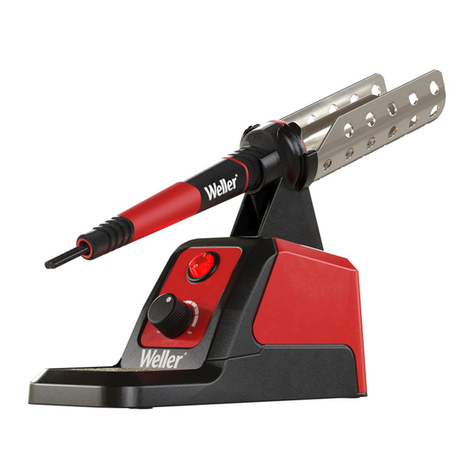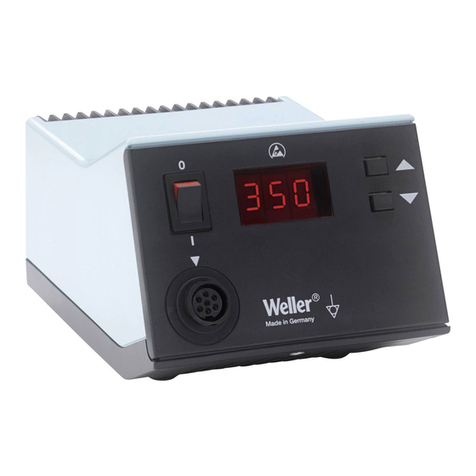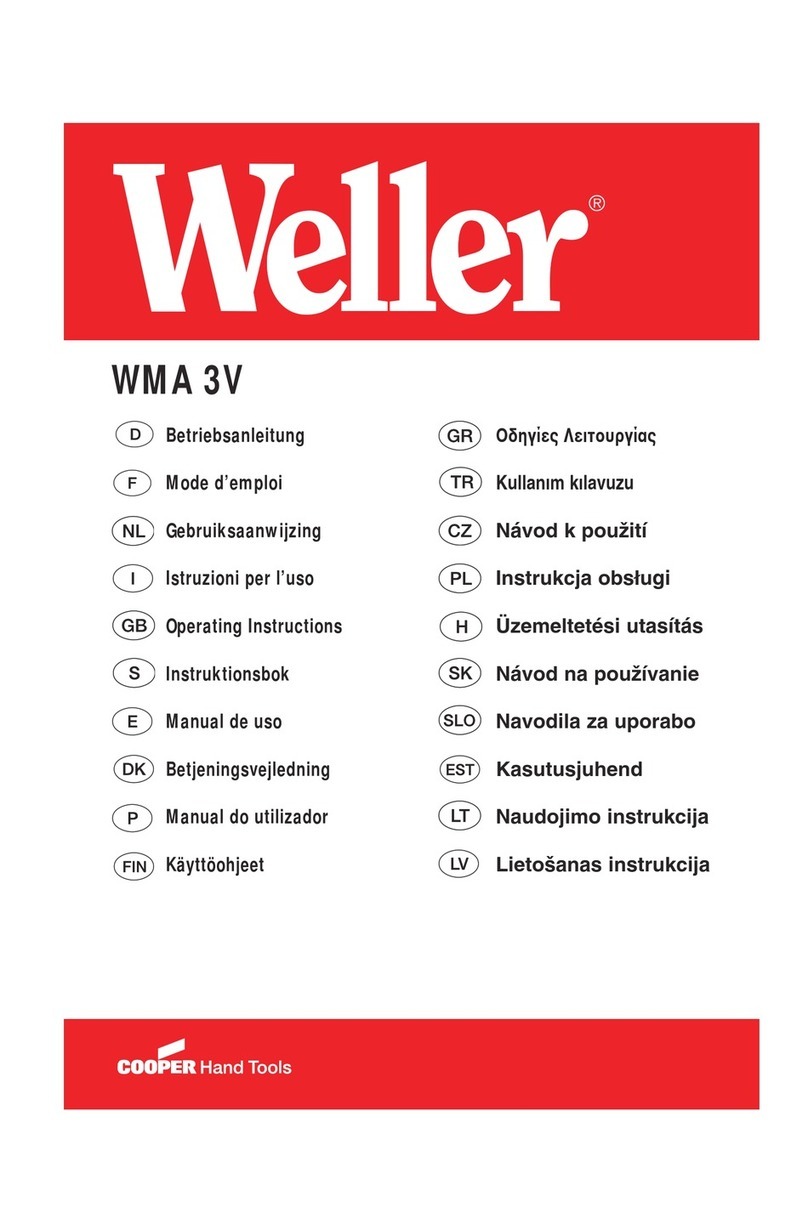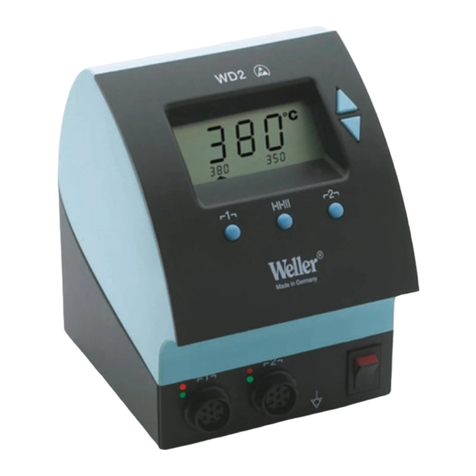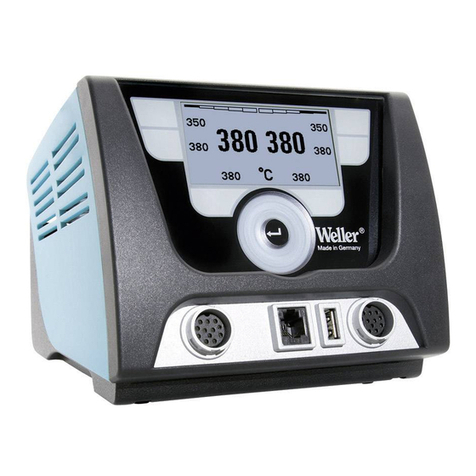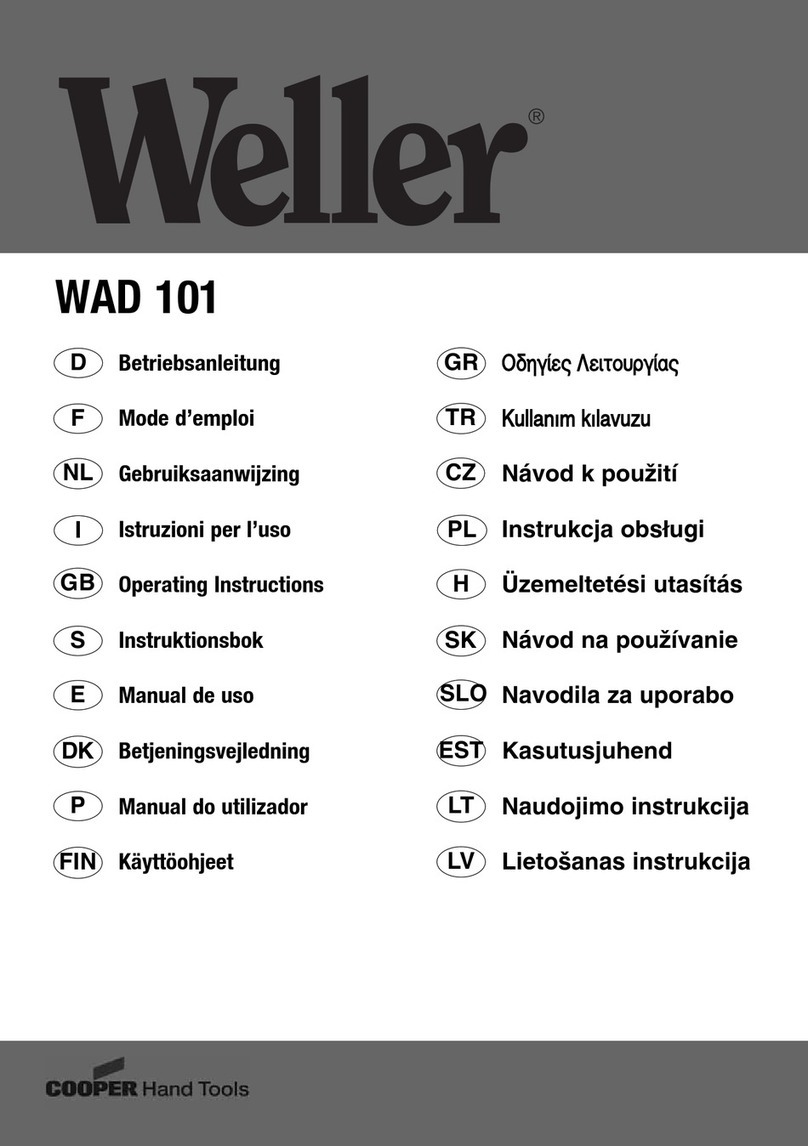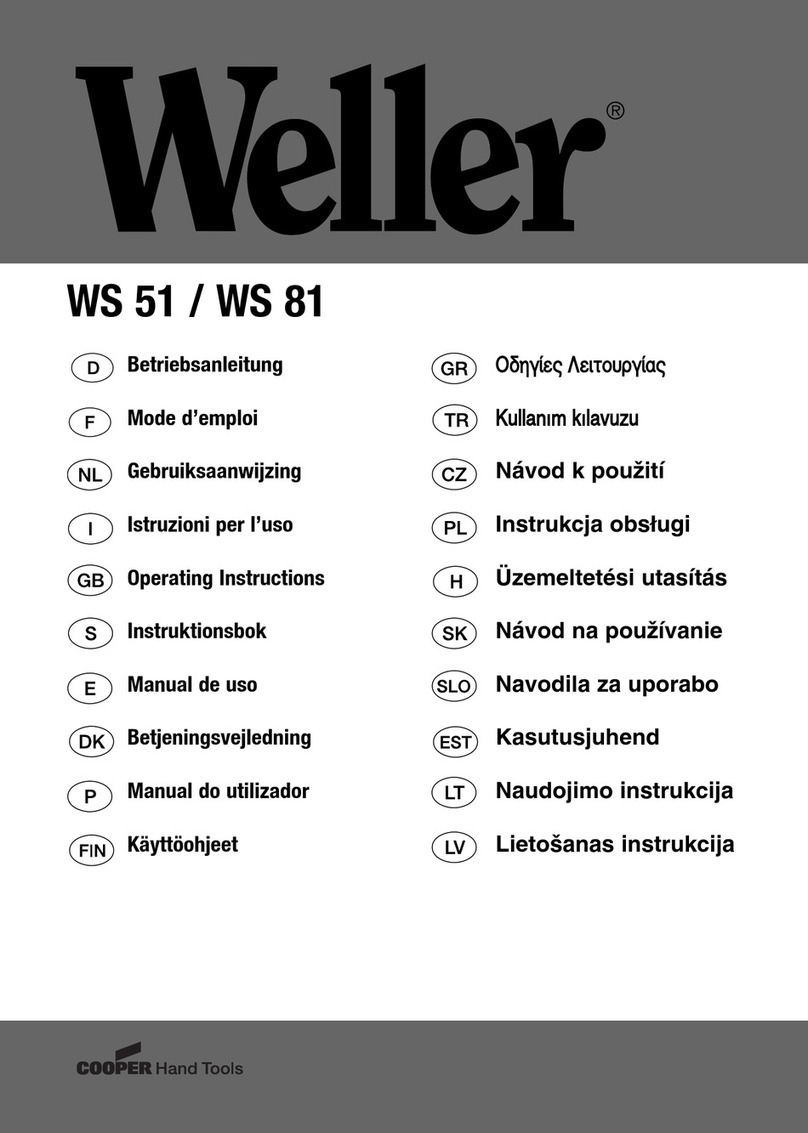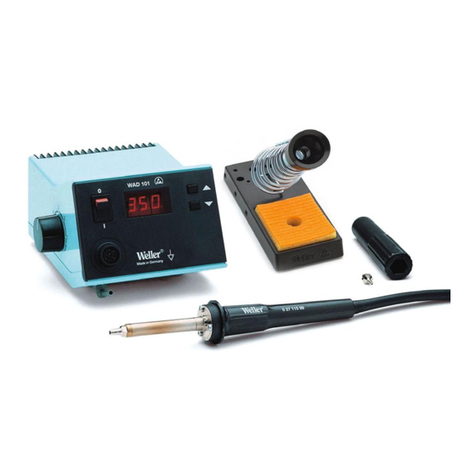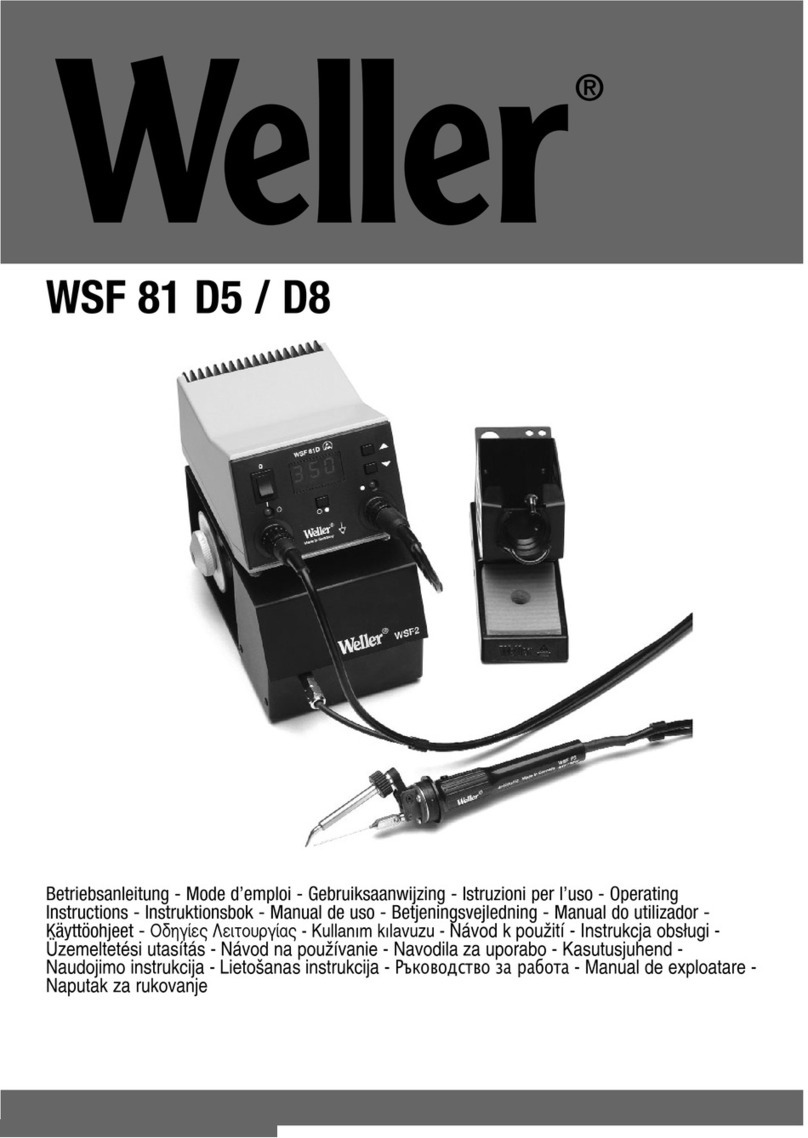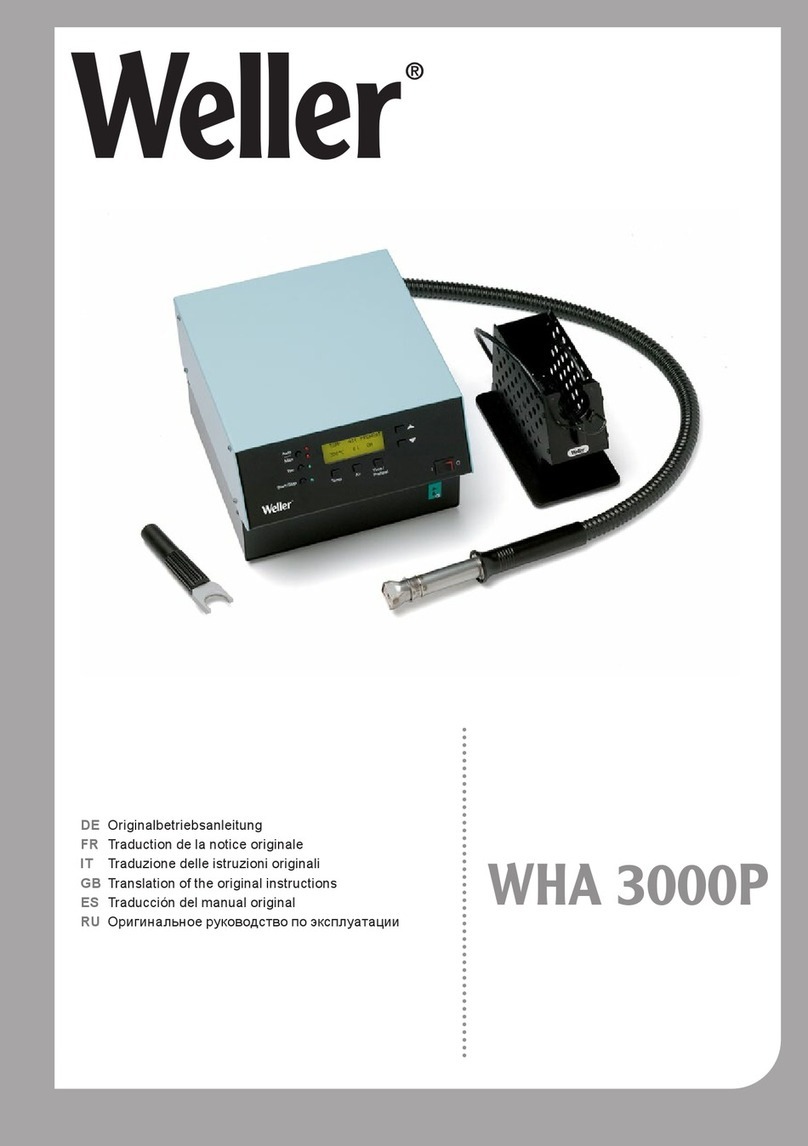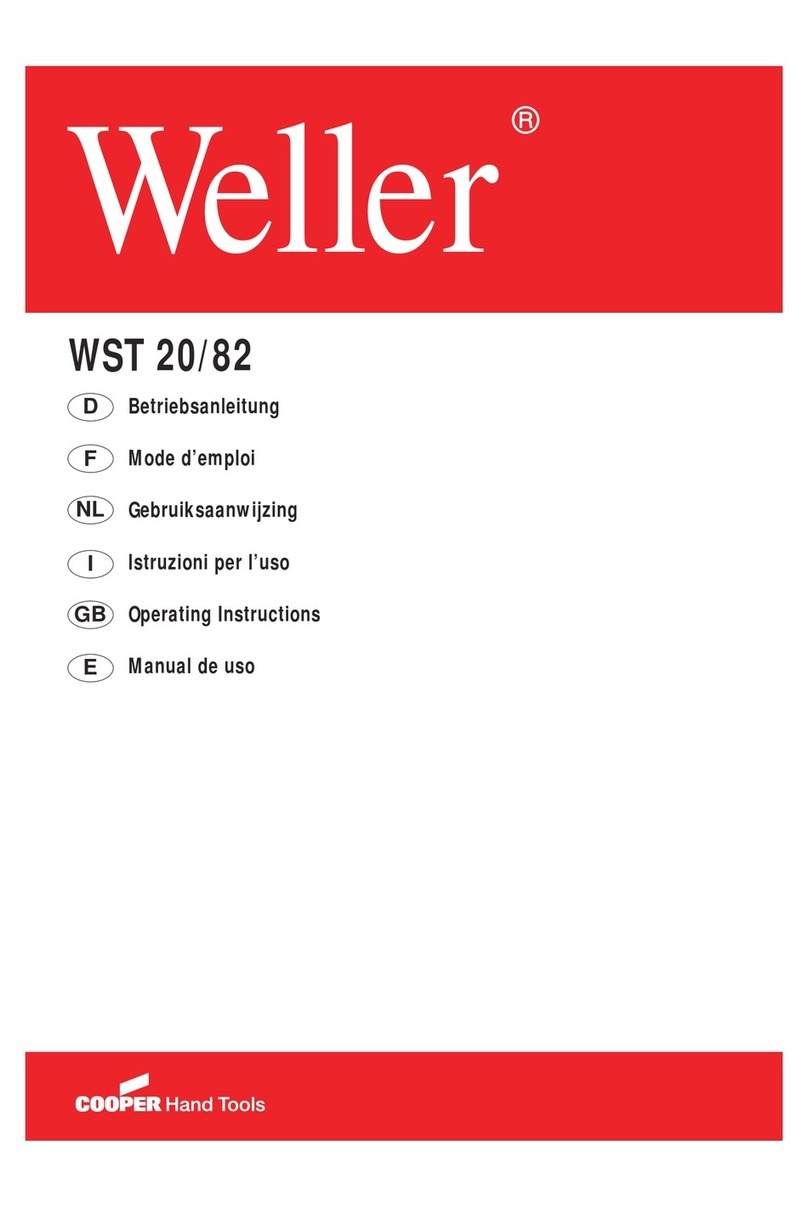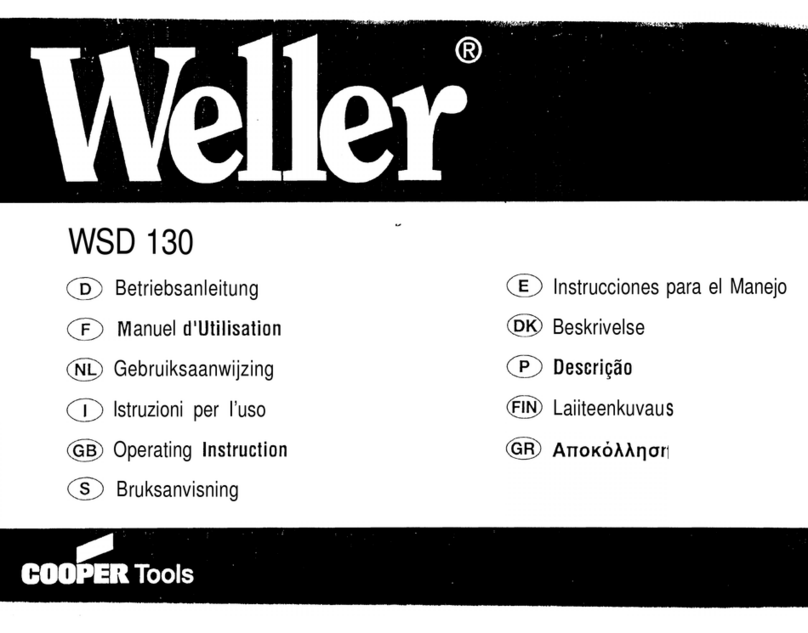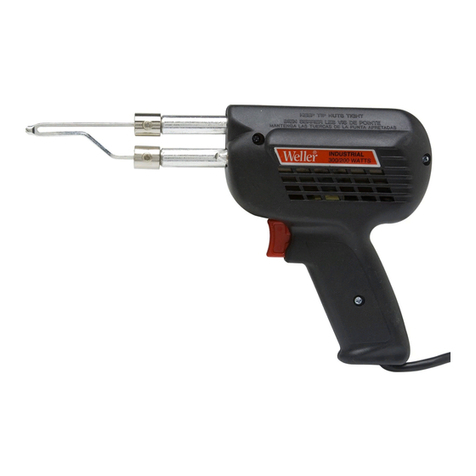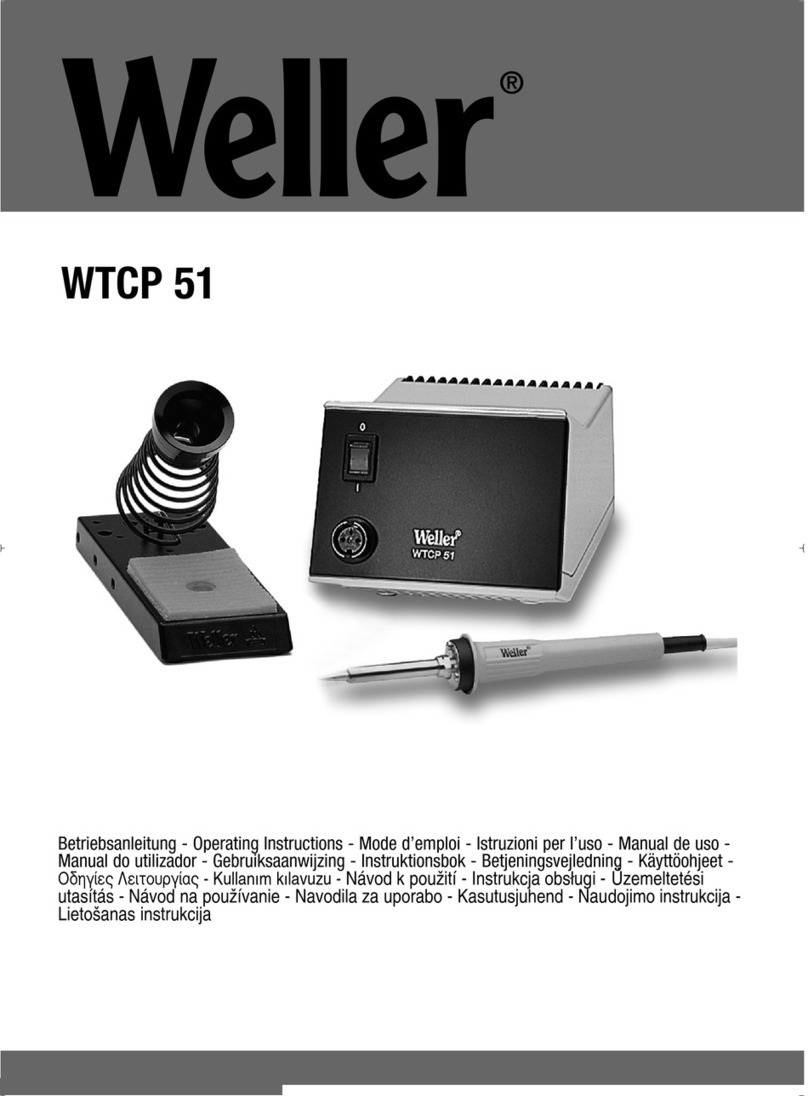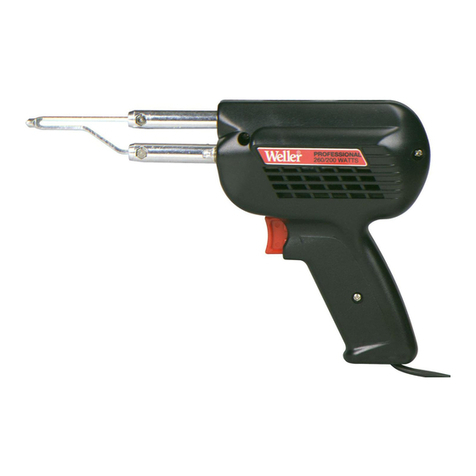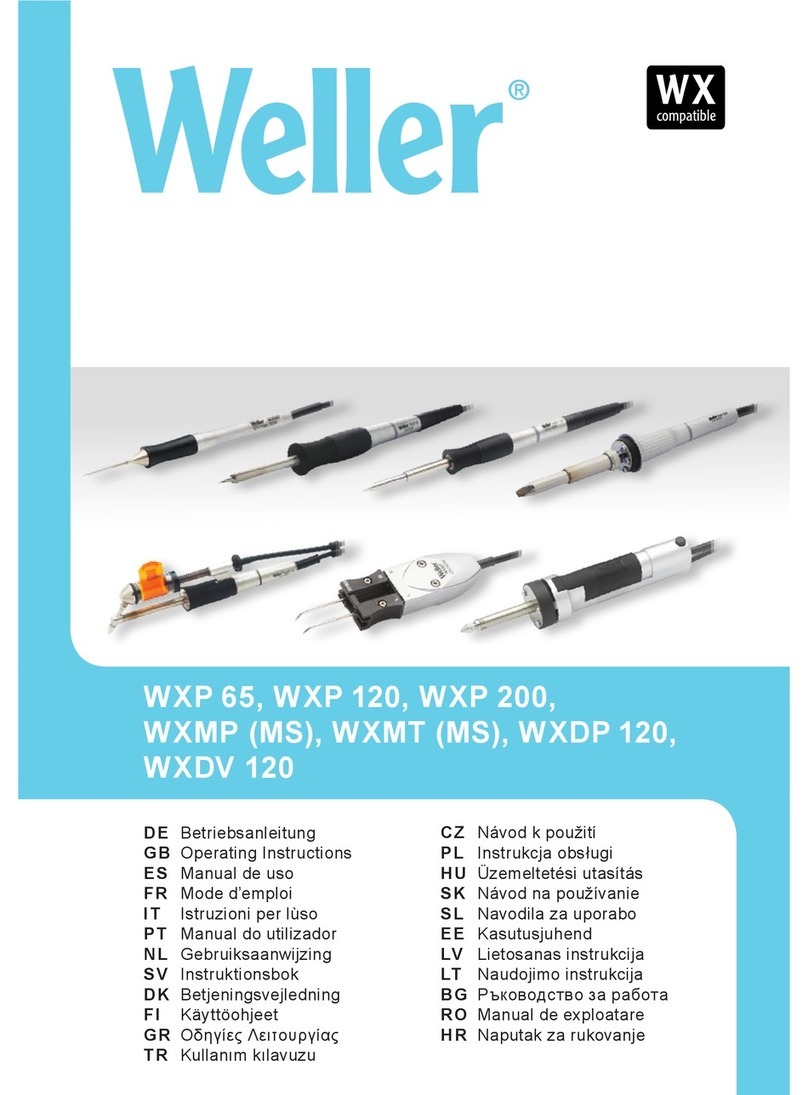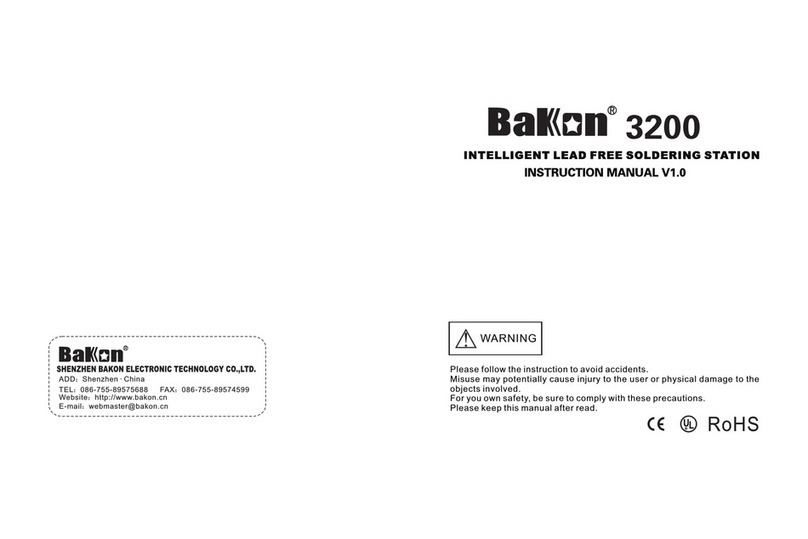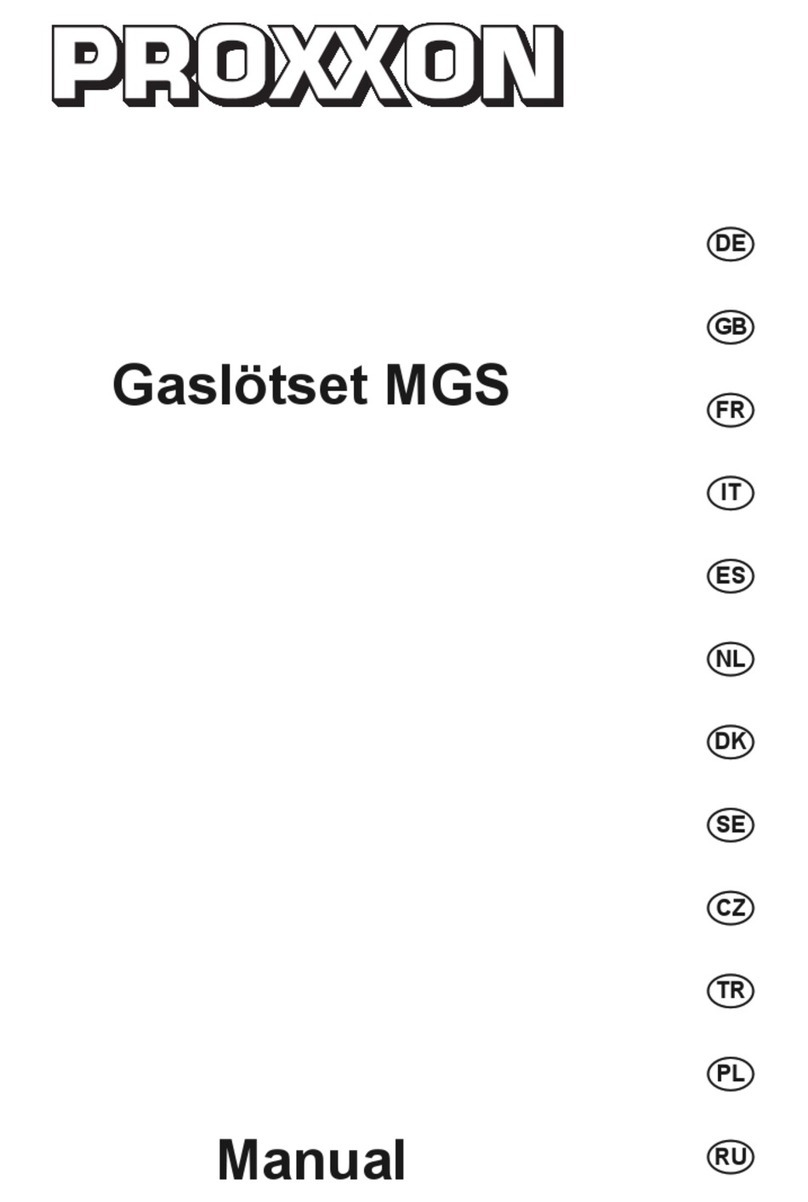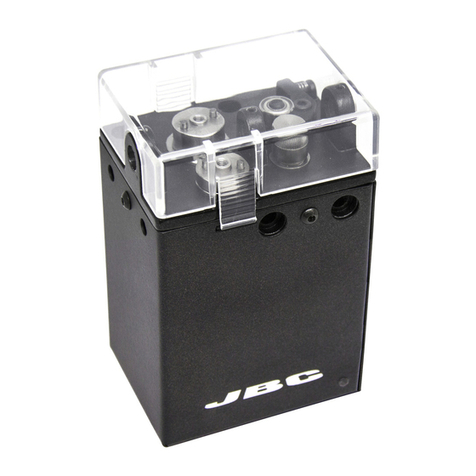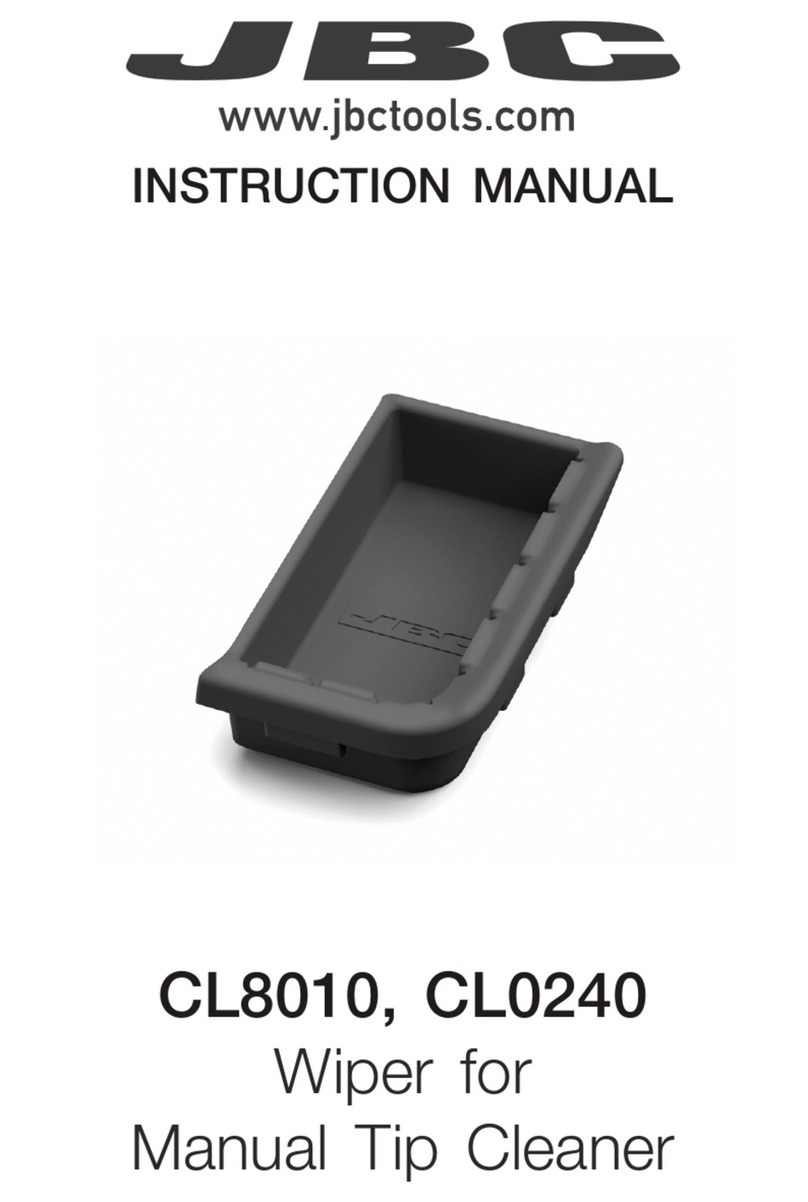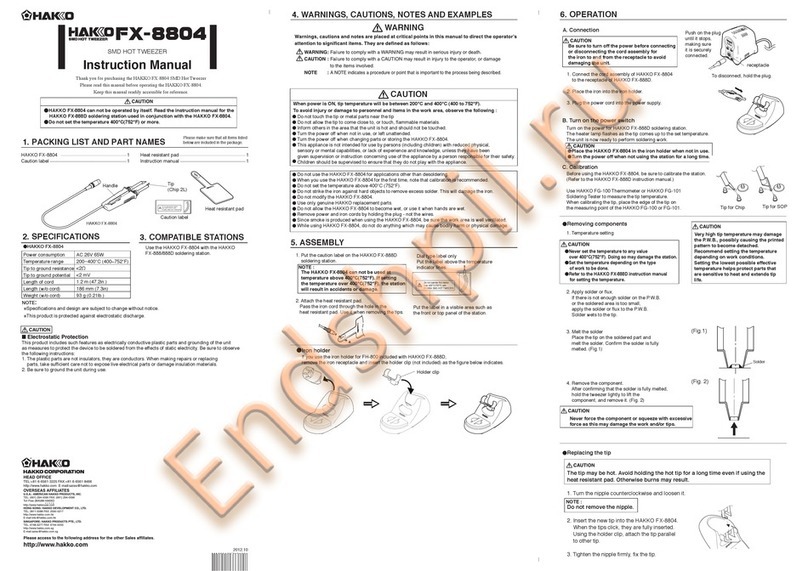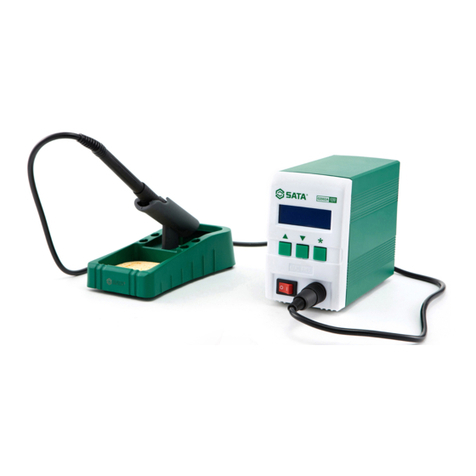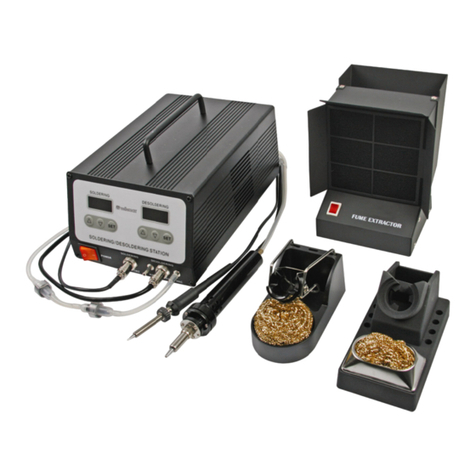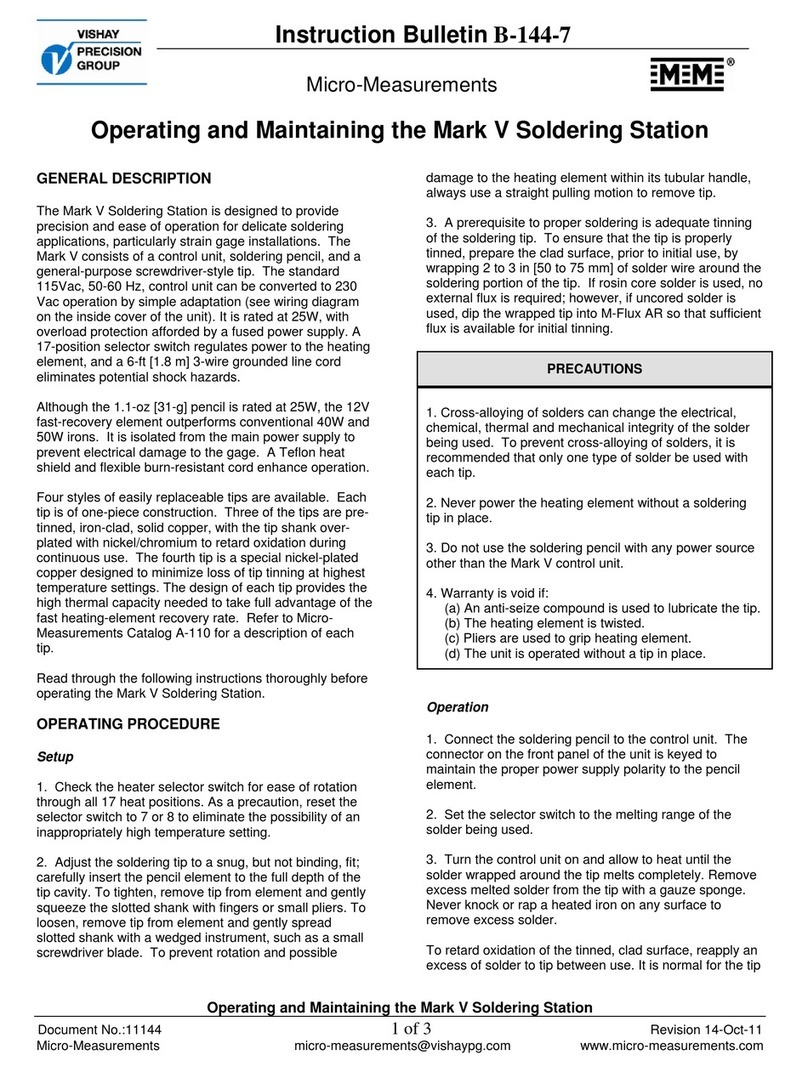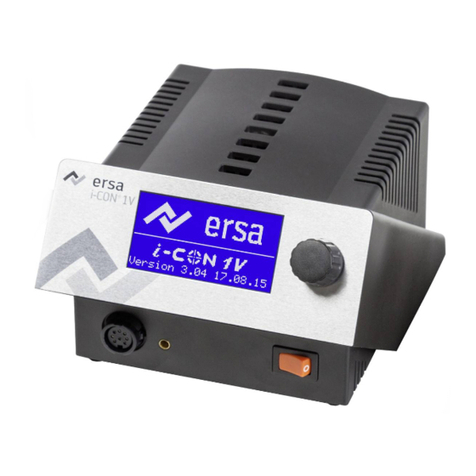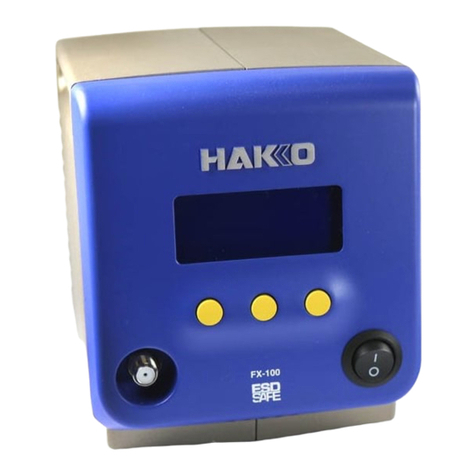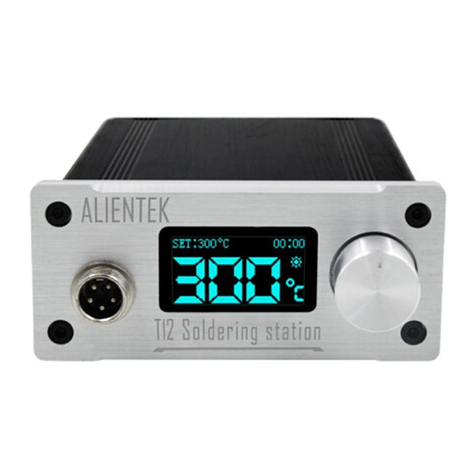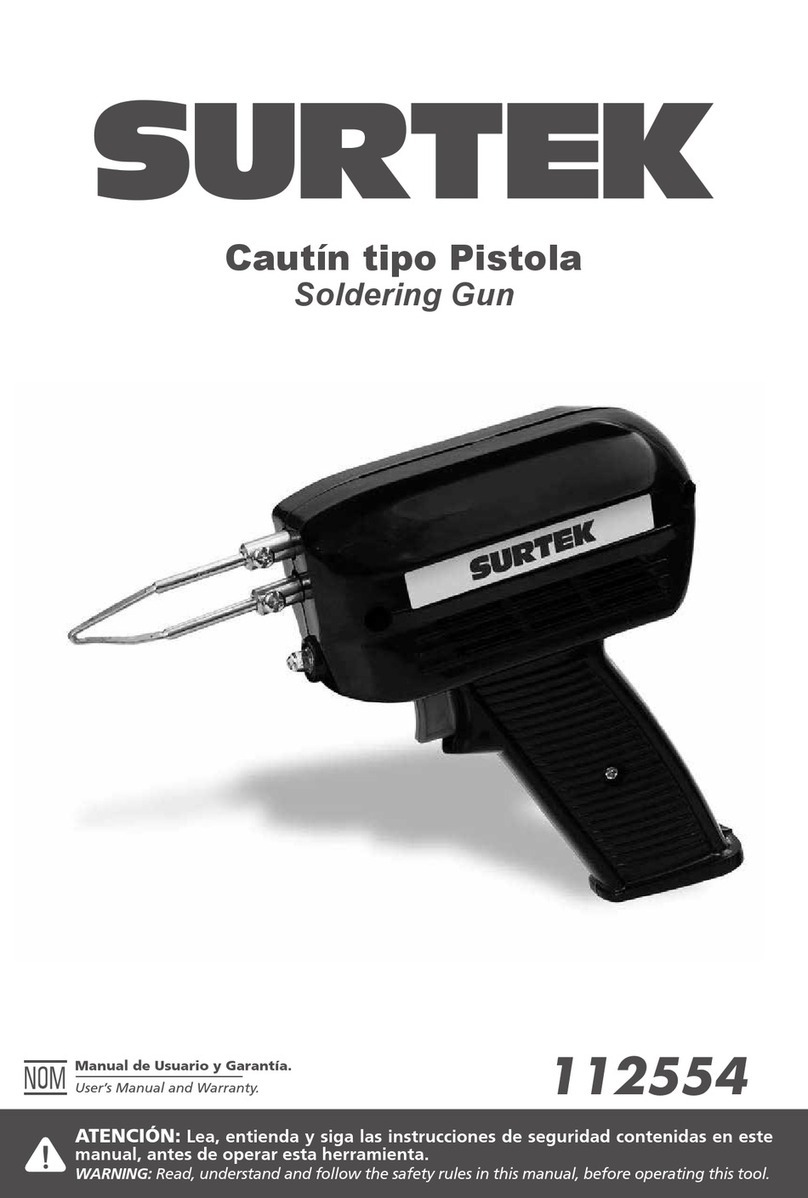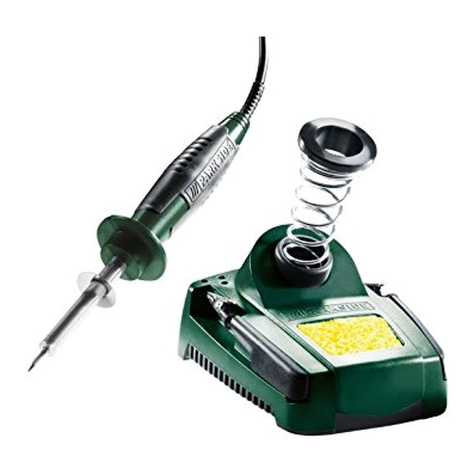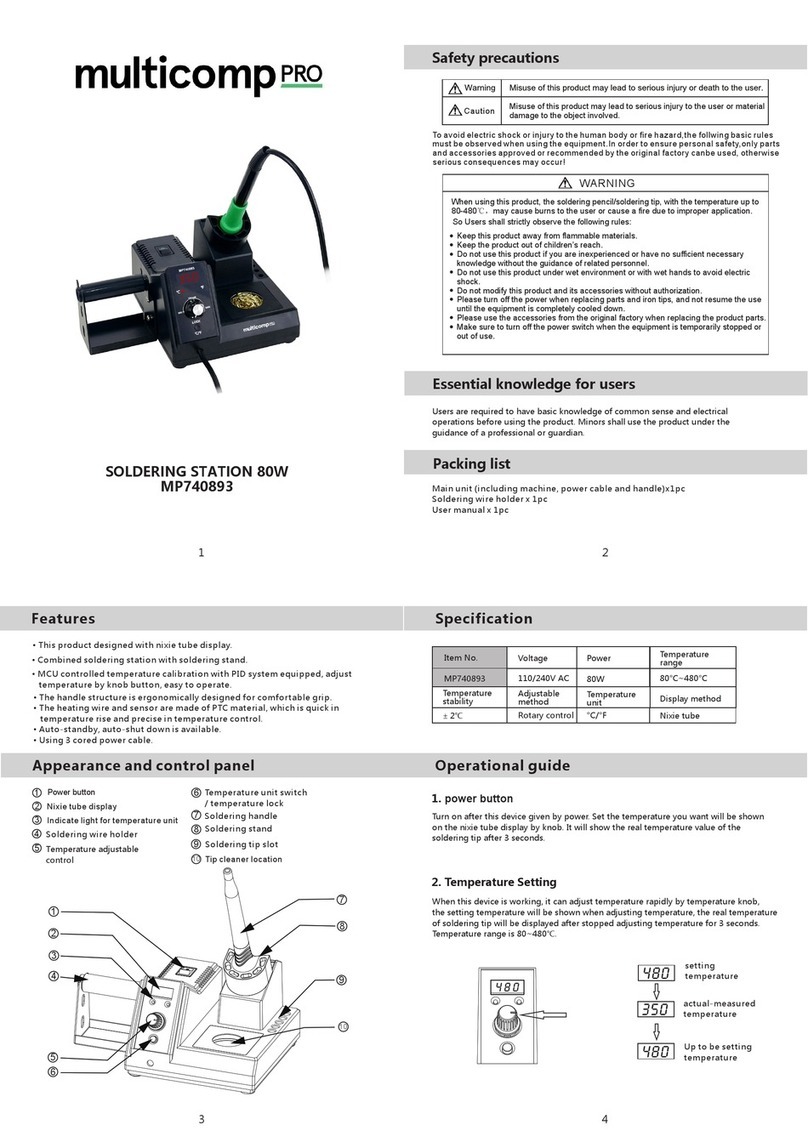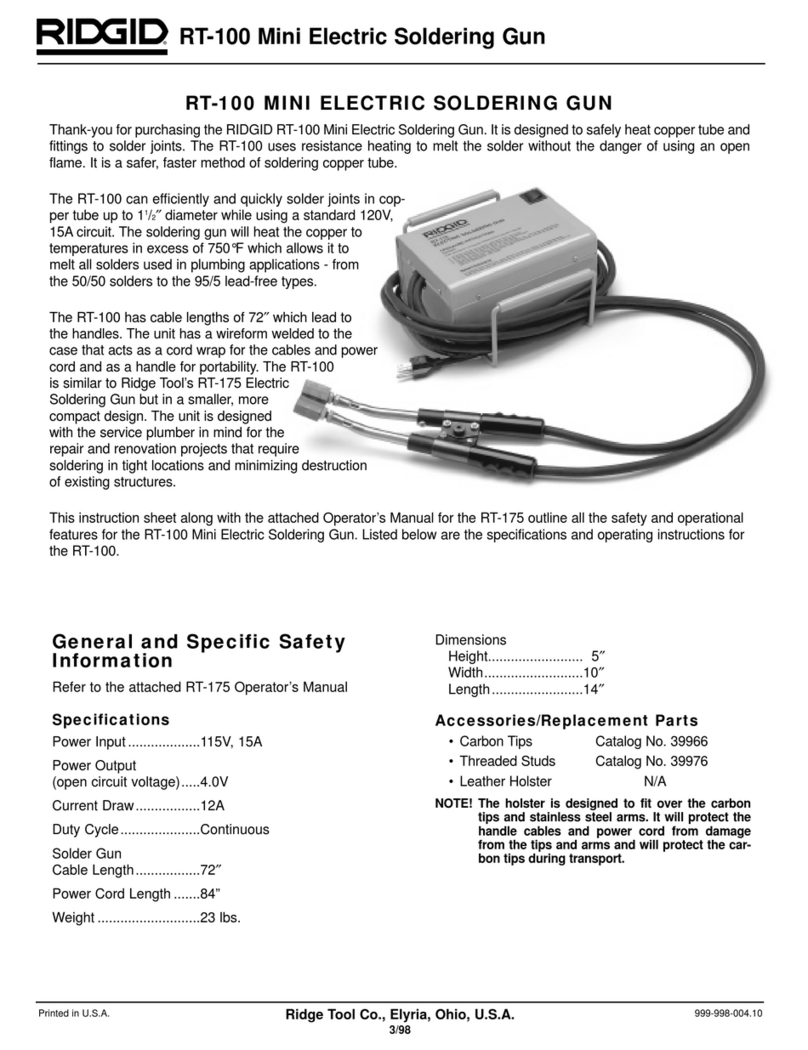
10-10 WSD 151 / PUD 151R
8Fehlermeldungen und Fehlerbehebung
Meldung/Symptom Mögliche Ursache Maßnahmen zur Abhilfe
Anzeige: "- - -“ Werkzeug wurde nicht erkannt
Werkzeug defect
Anschluss des Werkzeugs am
Gerät überprüfen
Angeschlossenes Werkzeug
überprüfen
Anzeige: "tip" Lötspitze des Mircotools nicht
richtig eingesteckt oder defekt
Lötspitze erneut einstecken
Defekte Lötspitze tauschen
Keine Displayfunktion
(Display aus)
Keine Netzspannung vorhanden Netzschalter einschalten
Netzspannung überprüfen
Gerätesicherung überprüfen
9Zubehör
T005 87 447 38 Heizkörper HER, 80 W
T005 87 637 30 Heizkörper HER, 120 W
T005 29 170 99 WSP 150 Lötkolben, 150 W
T005 26 152 89 LR 82 R (Roboter Anwendung)
T005 27 040 99 WSB 80 Lötbad, 80 W
T005 27 042 99 WSB 150 Lötbad, 150 W
T005 29 180 99 WP 80 Lötkolben, 80 W
T005 29 161 99 WSP 80 Lötkolben, 80 W
T005 33 131 99 MPR 80 Lötkolbenset, 80 W
T005 33 155 99 WMP Lötkolbenset, 65 W
T005 29 187 99 LR 21 Lötkolbenset, 50 W
T005 33 133 99 WTA 50 Entlötpinzettenset, 50 W
T005 27 028 99 WHP 80 Vorheizplatte, 80 W
T005 31 180 99 WCB 2 Externes Eingabegerät
T005 25 032 99 WST 82KIT1 Thermisches Abisoliergerät
T005 25 031 99 WST 82KIT2 Thermisches Abisoliergerät
T005 15 161 99 WDH 10T Schaltablage WP 80/WSP 80
T005 15 162 99 WDH 20T Schaltablage WMP
10 Entsorgung
Entsorgen Sie ausgetauschte Geräteteile, Filter und alte Geräte
gemäß den Vorschriften Ihres Landes.
11 Garantie
Die Mängelansprüche des Käufers verjähren in einem Jahr ab
Ablieferung an ihn. Dies gilt nicht für Rückgriffsansprüche des
Käufers nach §§ 478, 479 BGB. Aus einer von uns abgegebenen
Garantie haften wir nur, wenn die Beschaffenheits- oder
Haltbarkeitsgarantie von uns schriftlich und unter Verwendung des
Begriffs „Garantie abgegeben worden ist. Technische Änderungen
vorbehalten! Die aktualisierten Betriebsanleitungen finden Sie unter
www.weller-tools.com.
